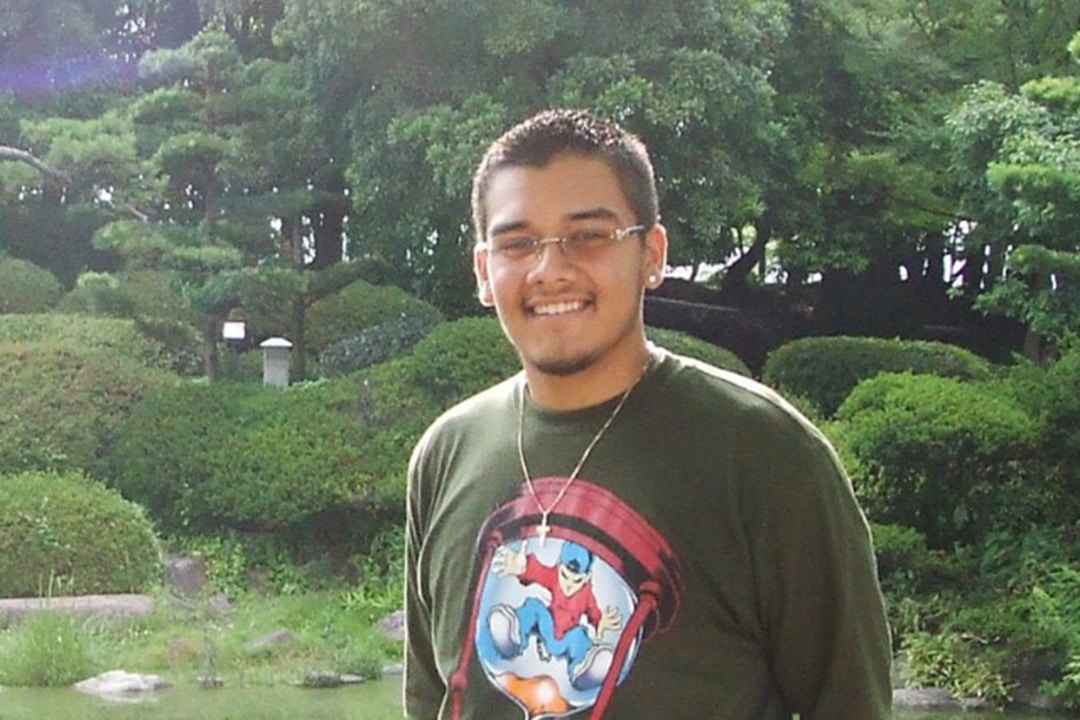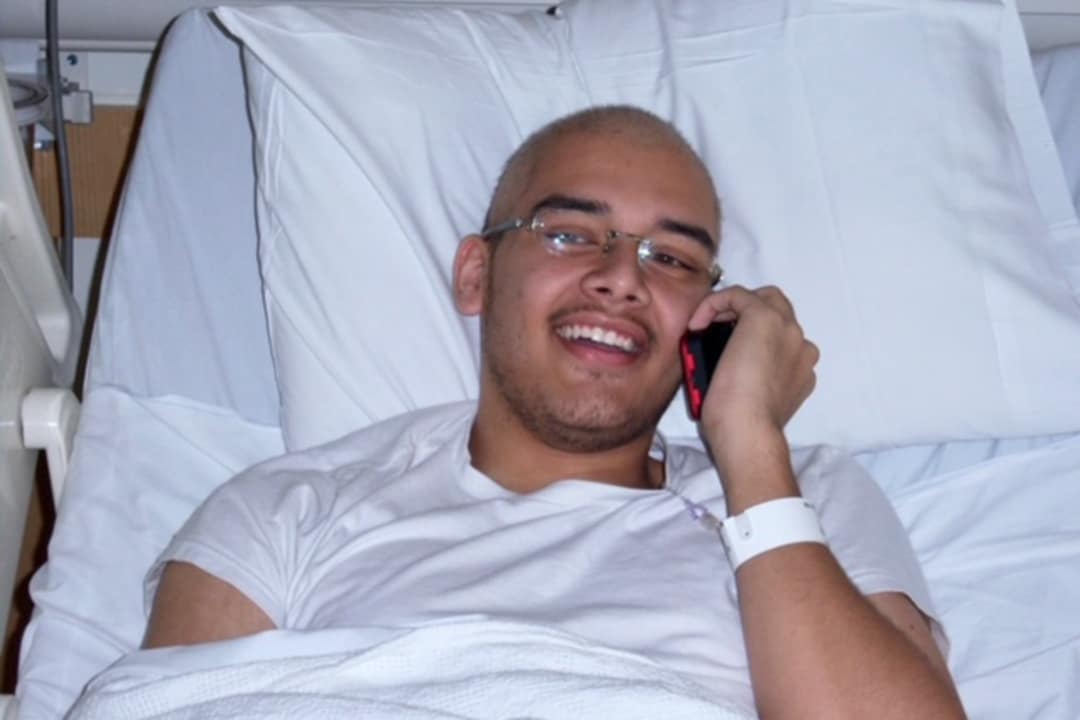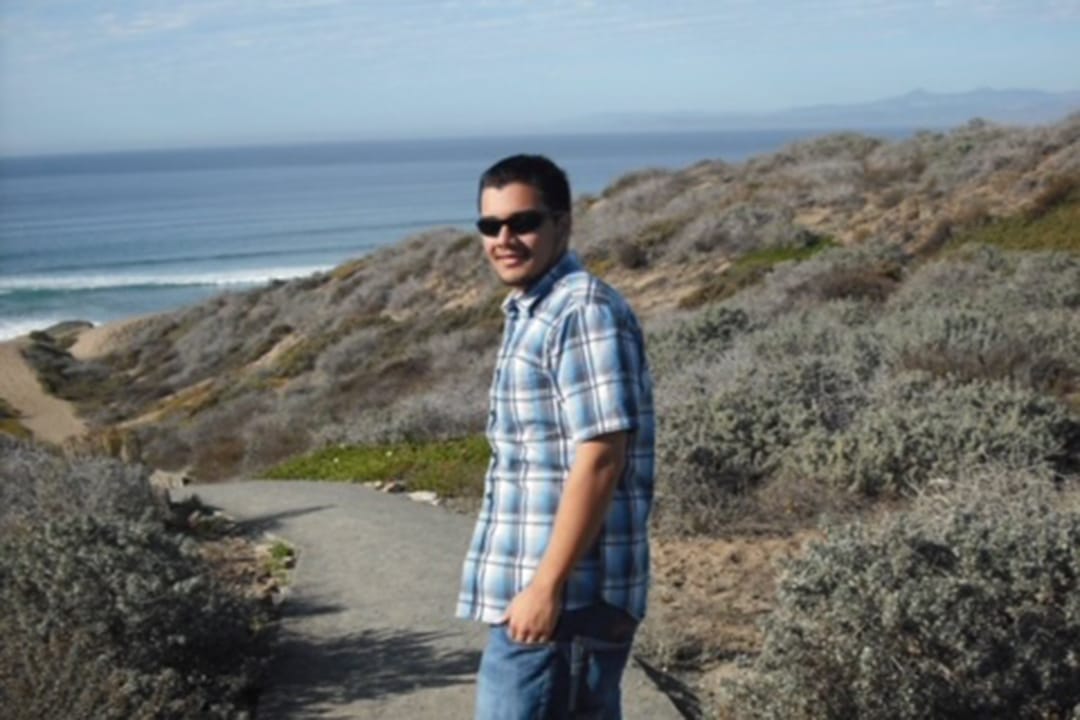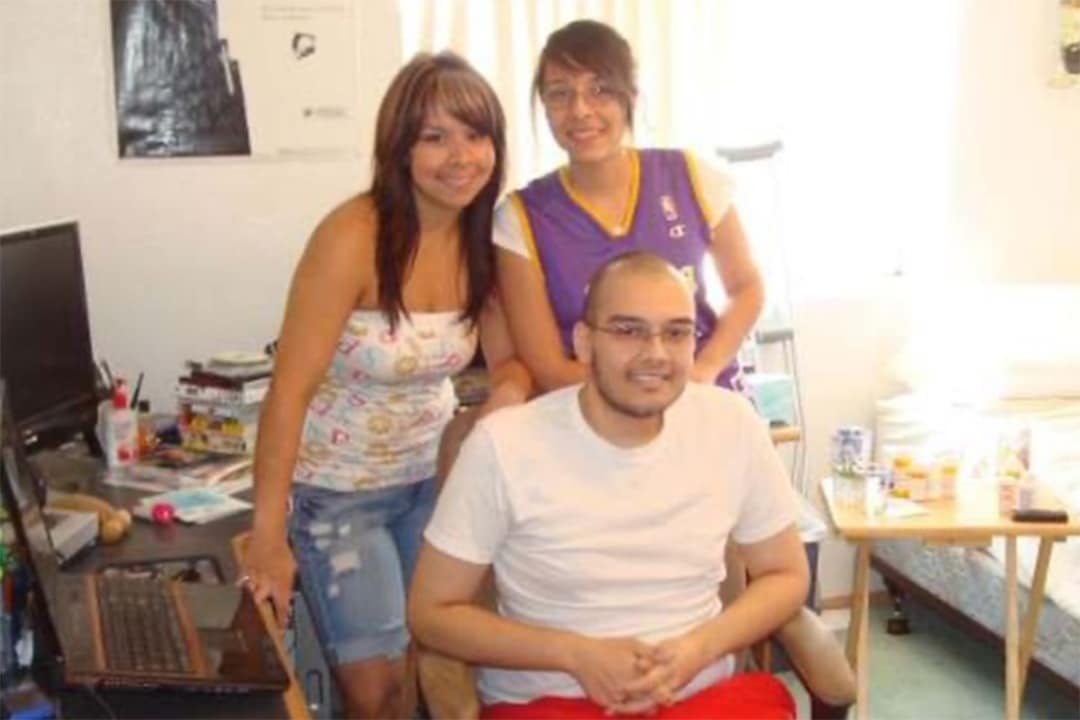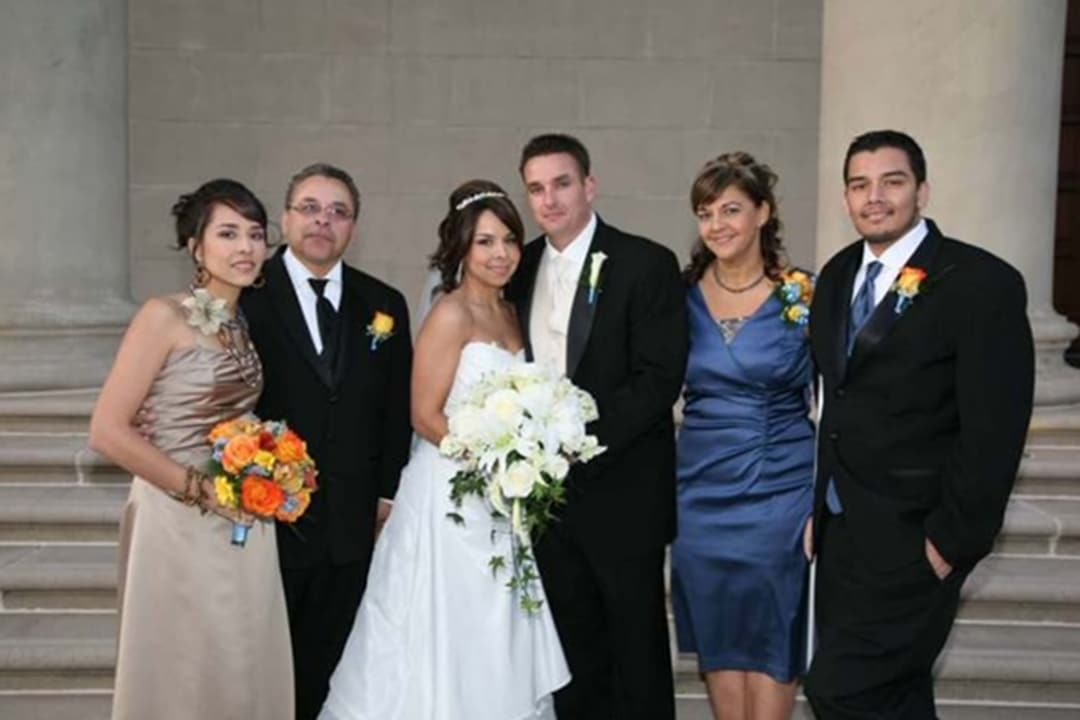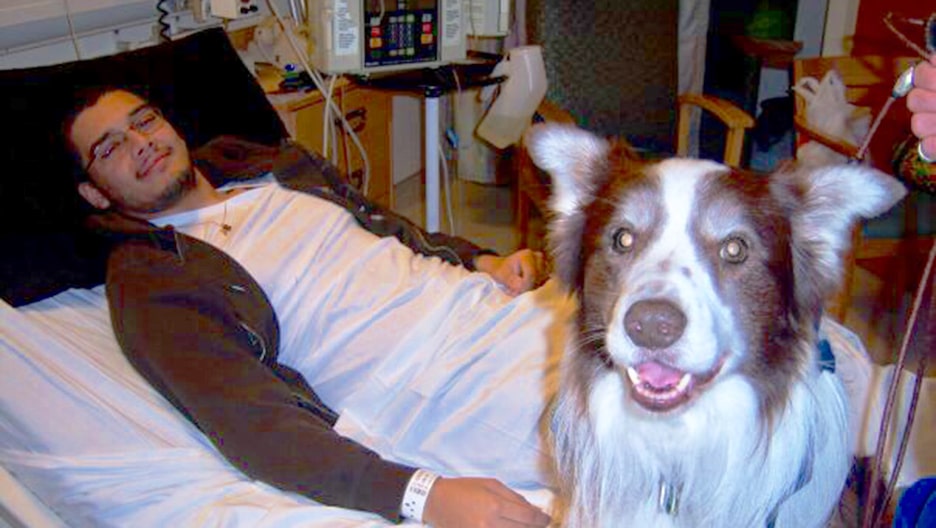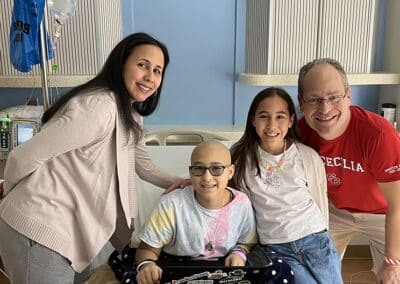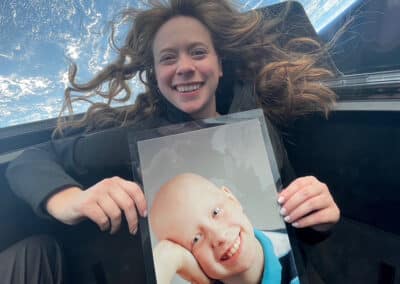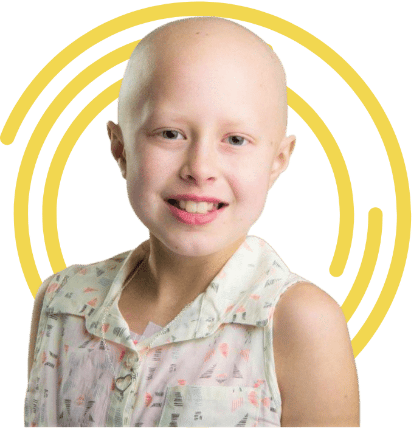Joey’s Osteosarcoma Story
Joey passed away on June 11, 2010, less than a year and a half after being diagnosed with osteosarcoma at 21. Initially, he was told his knee pain was caused by a hematoma, and he spent months taking pain medication and going to physical therapy to no avail.
Joey was in his third year of college studying computer science when he finally received a proper diagnosis for his knee pain. His mother, Linda Heredero, was in disbelief when Joey called to tell her.
“He was crying, and I am like, ‘What is going on?’” she says. “That is when he told me he had osteosarcoma. All I could say was, ‘Get a second opinion.’”
Linda was hoping that the doctor Joey had seen in their hometown of Lake Havasu City, Arizona, was wrong. She urged him to travel to Scottsdale for a second opinion. Unfortunately, that doctor confirmed Joey’s osteosarcoma diagnosis.
Joey’s family decided he would be in the best hands at UCLA Health. His oncologist there, William Tap, MD, recommended the standard course of treatment for osteosarcoma — surgery and chemotherapy. Joey chose to have limb-sparing surgery with a knee replacement over amputation. Then he began chemotherapy treatments in Santa Monica, California.
“Chemo was bad. He got really sick,” Linda says. “And the worst part is that I was not there, because I was working. After a while I was just like, ‘I cannot do this anymore. I cannot listen to how horrible my son is doing while I am at work teaching a classroom full of kids.’” Linda decided to leave her job to care for Joey.
Losing His Leg
After healing from surgery, completing physical therapy, and finishing chemo, Joey started resettling into his life with school, work, and friends. He was in remission for about four months when Linda noticed him limping again.
After a call to Dr. Tap, the two got in the car and drove to UCLA Health as ordered.
“The surgeon came in and said he wanted an X-ray and a bone scan and a biopsy immediately,” Linda says. “When he was done, Joey — he was always such a jokester — looked at him and said, ‘Are you going to say hello to me now?’ That broke [the surgeon]. This serious guy — chief of staff — just laughed. He loved Joey from then on.”
After the smattering of tests, Joey got the bad news: His cancer was back, and he needed an above-the-knee amputation, which he had in March 2010.
